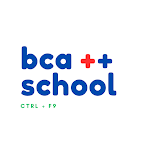Introduction:
- Briefly introduce the importance of data types in programming.
- Highlight the significance of understanding data type ranges in C.
1. An Overview of Data Types in C:
- Discuss the fundamental data types in C, such as int, char, float, double, etc.
- Explain the role of data types in memory allocation and program efficiency.
2. Integer Data Types:
- Explore integer data types like char, int, short, long, and their ranges.
- Discuss the significance of signed and unsigned integers.
3. Floating-Point Data Types:
- Explain the characteristics of float and double data types.
- Discuss the precision and range of floating-point numbers in C.
4. Character Data Types:
- Describe the char data type and its use for representing characters.
- Discuss the ASCII character set and its relevance.
5. Enumerated and User-Defined Data Types:
- Introduce enumerated data types and how they can be created.
- Explain how to define custom data types using
typedef.
6. Practical Examples:
- Provide code examples to illustrate the use of different data types.
- Emphasize the importance of choosing the right data type for specific tasks.
7. Common Pitfalls:
- Address common mistakes and pitfalls related to data type selection.
- Explain the consequences of choosing incorrect data types.
8. Best Practices:
- Offer tips and best practices for selecting appropriate data types in C.
- Discuss performance considerations and trade-offs.
9. Conclusion:
- Summarize the key points discussed in the article.
- Encourage readers to make informed data type choices in their C programs.
10. Additional Resources:
- Provide links or references to relevant documentation, tutorials, or further reading materials.

